Emojis & SEO — Use of Emojis in meta titles and descriptions

Use of emojis in search - market study
Emojis are a common theme in 2019. very few SEO specialists know about the use of emojis and icons, of the few who know that use is allowed within meta titles and descriptions, most people don't know if emojis affect SEO positively or negatively. Seeing that it was a topic of interest to several managers of different types of companies and sectors, we have prepared an article in which we explain the benefits of using emojis within SEO strategies.
First of all, it is important to note that there are several studies on the use of emojis at the user level but none only at the company level. El most relevant study This is the one carried out by the University of Michigan together with Peking University, approximately 427 million messages from almost 4 million smartphones in 212 countries were analyzed to see if the use of emojis was universal or, if it varied depending on the user's location and culture.
The result was the following: the smiley face with tears of joy in its eyes is the most used emoji followed by the face with heart-shaped eyes.
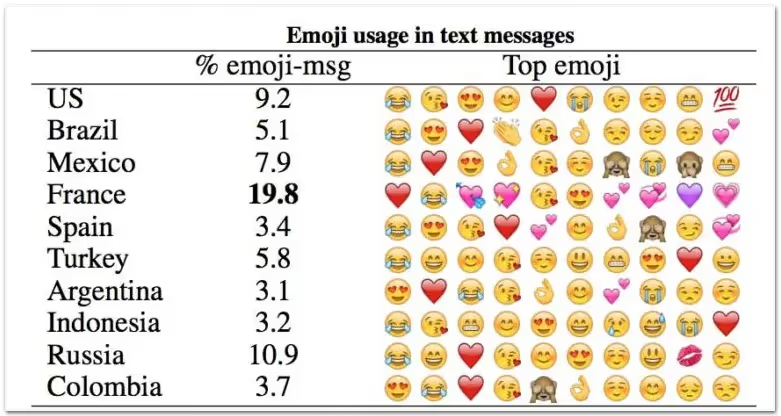
In a study The most recent one developed by Brandwatch in which 6 billion emojis have been analyzed on Twitter over the last two years, we can see how 95% of users have used emojis and this makes emojis the most popular language on the Internet.
The report reveals some very interesting facts, such as: the mood of the audience, the use of emojis by country, the use of emojis by consumers and brands.
We can see how Pantene is the most positive brand on Twitter (with 93.9% of positive emojis), followed by Jameson (93%) and Subway (90.5%). By industry, hotel chains generated the most positive emojis (82.5%), followed by the fashion industry (81.3%) and Spirits (81.2%).
The two studies mentioned above cover the use of emojis in messaging applications and social networks, but not in the use of emojis within the Title and Meta Description of a page.
HOW TO USE EMOJIS IN SEO POSITIONING
Currently, Search engines allow users to search and display results based on emojis, although Google deactivated this feature in 2015 but turned it back on in 2016. After carrying out several tests on web positioning, we believe that Google is increasingly considering including emoticons in its answers since the use of emojis by users is increasing.
After reviewing several articles, studies and carrying out different tests on add emojis to the Title and Meta Description of web pages, we can say that in Spain, usage by companies is very low. Which means that It's a good opportunity to stand out from the rest, since very few web pages are using emojis in the title and descriptions.
Below, we share some tests we've done: first we're looking for”Hamburger restaurants near me” and, subsequently,”Burger in Barcelona” combining the use of emojis and words. As can be seen in the following images, the use of emojis in titles and metadescriptions is very low. It can also be seen how the results offered by Google with the use of the emoji in the search bar are different from searching for words.
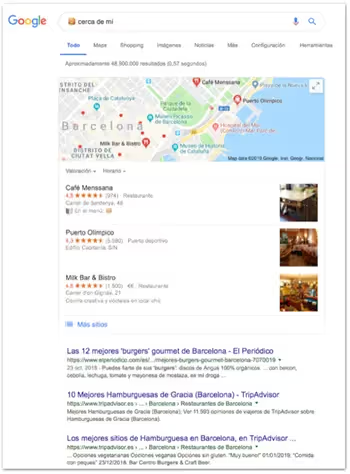
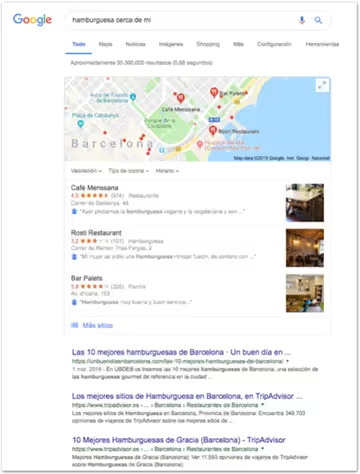
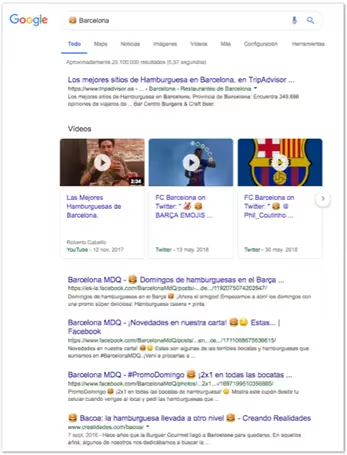
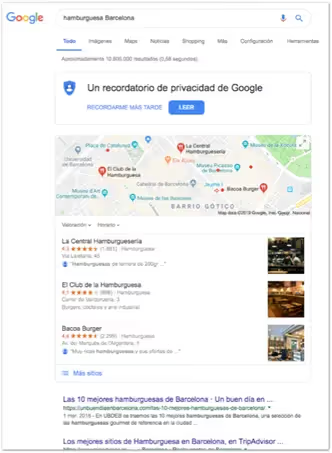
In the search results with the hamburger emoji combined with the word Barcelona, we see how the vast majority of results come from comments and the use of emojis on social networks. The absence of brand or product pages tells us that brands don't usually use emojis in their metadata in the gastronomy area, so the results that rank first are from other types of pages and this represents a positioning opportunity.
Another of the tests we have carried out is the search for the word”hamburger” (only in text format) and, later, the hamburger emoji in the Google search engine. We can also observe, as in the previous case, that the results offered by the search engine are different.


Emojis in smartphone results
Continuing with the research, we have also verified the results on mobile devices where the use of emojis seems more natural, since keyboards include emojis. To understand the type of results for such short searches and with so little context of the user's intention, we have tested 2 types of emojis:
- Popular emojis - faces representing emotions
- The rarely used emojis - emojis for objects or concepts
Emotions: The Search for Meaning

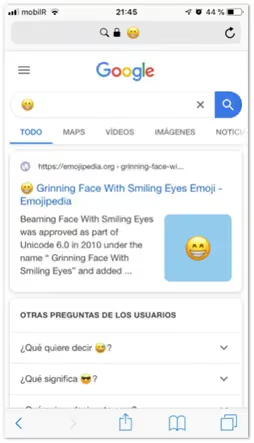
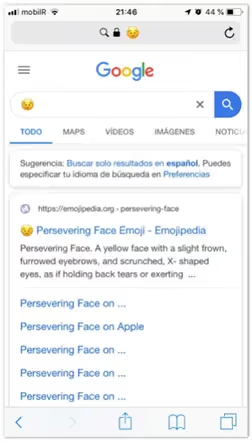
Analyzing the search results for the most popular emojis on social networks such as WhatsApp, Snapchat and Instagram, a trend occurs: The results clarify the details of the emoji, but above all, its meaning. In the world where the use of emojis replaces words, users reassure themselves that they have understood the other party's message correctly to avoid potential misunderstandings. In the area of classic emojis, the results are dominated by Emojipedia, the Wikipedia of emojis.
Emojis for objects and concepts
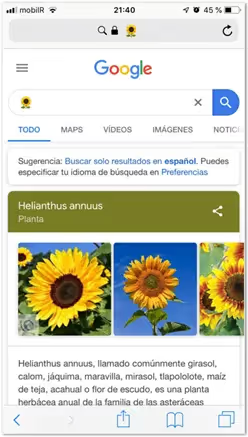
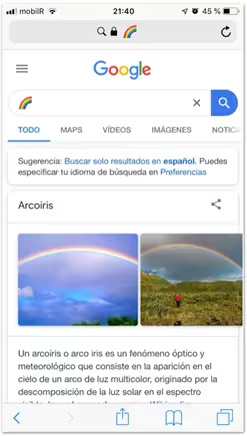
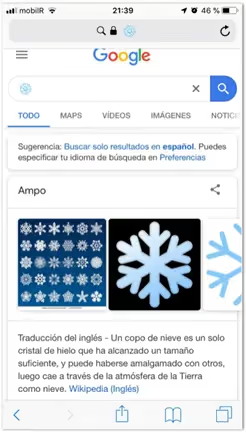
The second group analyzed by Novicell were more specific emojis, those that represent objects. Within this group you can recognize emojis for food, drink, products, etc., these emojis are less popular but more specific.
What's happening is very interesting. Object emojis are understood by Google as objects themselves, not as emojis. In this case, we can see in all the examples how the main result comes from Wikipedia creating a Featured Snippet result. The use of emojis, in this case the results are the same as those of using words, for example field, rainbow or sunflower.
Using emojis for brands
Knowing that Google identifies emojis in several ways - directly as emojis or as their concepts, we ask ourselves the following questions: Are emojis worth using in SEO optimization? What will the results be?
As we mentioned before, the use of emojis must be appropriate to the industry and the brand's communication style. Modern brands, focused on young audiences, can introduce emojis in their metadata. The important thing is to understand that it is not yet known if the use of the emoji instead of the keyword brings the same results, which is why it is not advisable to replace the current words with only emojis. What it can offer us The impact of emojis on CTR is very positive of the result.
The effect of attracting the user's attention on the SERP (Search Engine Result Page), the impact will most likely be positive in relation to SEO. And as we already know from several researches, a high CTR impacts rankings in the long term. That is to say - if Google sees that position 3 constantly receives more clicks than the result of position 2, it will understand that the number 3 has more value for the query in question and will improve the ranking of this result. So, if you think that your users are going to respond well to the emoji that represents your business or product - go ahead, this strategy is worth testing and analyzing.
Emojis for business - Examples:
Nowadays, some brands are testing some strategies including emojis in their metadata. The examples we have found are from the world of retail and FMCG (Fast-Moving Consumer Goods, also in Spanish, fast-moving consumer goods).
Emojis for jewelry

The product promoted in this SERP can be represented with a single emoji in a way acceptable to the user before reading the title or description. In this case, the web uses not only the emoji to attract the user's attention, but several tactics: the markup of the breadcrumbs and the markup of the products. This means that the use of the emoji creates the part of the SEO strategy of this website.
Emojis for the world of gastronomy

The first example is from the corporate blog Just Eat. In this case, the use of the emoji fits the business very well, knowing that the blog has much more relaxed communication rules than the main pages. In the case of Just Eat, the pizza emoji almost completely replaces the keyword”Pizza”, which is a bold move.
Other examples of the use of emojis in gastronomy come from an international blog called Cookpad. In this case, almost all recipes have a relevant emoji, related to the main ingredient.
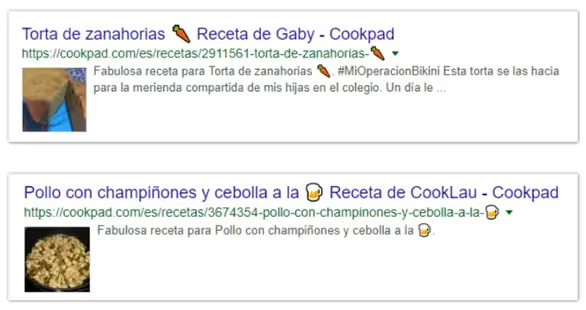
Social Networks
1- Videos on YouTube
YouTube, the Internet's video platform par excellence, has also noticed the use of emojis in video titles. In this case, it's important to note that emojis later serve as meta titles in Google results.

Brands that communicate with their users through YouTube can take advantage of emojis to give a more interesting and informal touch to their videos, Millenials will surely appreciate it. YouTube's more visible results can also improve brand visibility on this platform, which has become quite competitive in recent years. In this case, we are not only talking about Google's visibility but also about the visibility of the YouTube search engine itself.
2- Special case - emojis in the URL
WhatsApp, the world's best-known smartphone messaging application, has a different case: the emoji in the URL of its web version. This practice helps theattract the user's attention which usually seeks a more specific result, which is the official WhatsApp website.

The use of a quite different emoji in the URL can facilitate the process of finding the result for users who regularly search for Whatsapp on the web. The emoji serves as a single element to activate the memory of users, as we know, images are analyzed faster than words.
How to introduce emojis in meta titles and meta descriptions?
The trick seems much more complicated than it actually is. The way to insert emojis in the metadata is related to the HTML codes of each emoji:
- Sign in to http://www.amp-what.com/unicode/search/icon to find the emoji code you want to include in your metadata. The numbers start with & # and contain 6 digits.
- Paste the chosen emoji code into your meta title or your meta description.
- Wait a few days for Google to track and index your change, and check it in Google's results.
Actually, introducing emojis is easy. In most cases, Google understands the use of emojis in the title or description. However, it should be mentioned that there is a very low percentage of results where Google interprets the meta title differently than you have advised it, and it decides to change the contents to those that seem most appropriate to it.
So, if we only use emojis in the entire title, Google may ignore the meta title tag we've prepared. The best thing is to use common sense and use few emojis so that they are interpreted correctly by Google. A title created only with emojis wouldn't make sense.
What are the most appropriate emojis for a website?
The emojis may be interpreted differently depending on the user, for one person an emoji can have one meaning and for another person it can have a totally different meaning.
If you want to use emojis in the title and description of our website, The most important thing is that they are related to the sector of our company, for example, for a Marketing consultant, the optimal emojis that can convert the most are: ticks, checks, bullets, arrows or stars. On the other hand, for a company that sells food, it is best to select emojis with the type of food it sells.
It's also important to focus the metadata message with the brand's audience. Brands that direct their communication to millennials or Generation Z can gain a lot by speaking in a way familiar to their users, while B2B businesses such as lawyers, doctors, financial services or other professional services may have problems maintaining their image using communication that may seem unserious.
Fashion or a generational change?
Although there are still many experts who say that emojis are just a fad, we can't say the same thing because The use of emojis is constantly growing and, every day we can see how different social networks and mobile keyboards incorporate new emojis. According to the Emojipedia, an emoji reference website that documents the meaning and common use of emoji characters in the Unicode standard, there are 2,823 different emojis. There is even World Emoji Day, which is celebrated on July 17.
As we have already mentioned on more than one occasion in several of our articles, the user experience is a well-known quality indicator and Google has always placed a lot of emphasis on it. This is why, if emojis are used correctly, they can be of a high value, and above all, they can help differentiate our company from other competitors and be more easily remembered.
In the end, the use of emojis are a good complement to our Digital Marketing campaigns, and used correctly, they can boost our CTR and enhance the brand image in the target group.
How can we help you?
If you need more information, do not hesitate to contact get in touch with us.
Cómo podemos ayudarte
Consulta los servicios con los que te ayudaremos a conseguir tus objetivos digitales.
